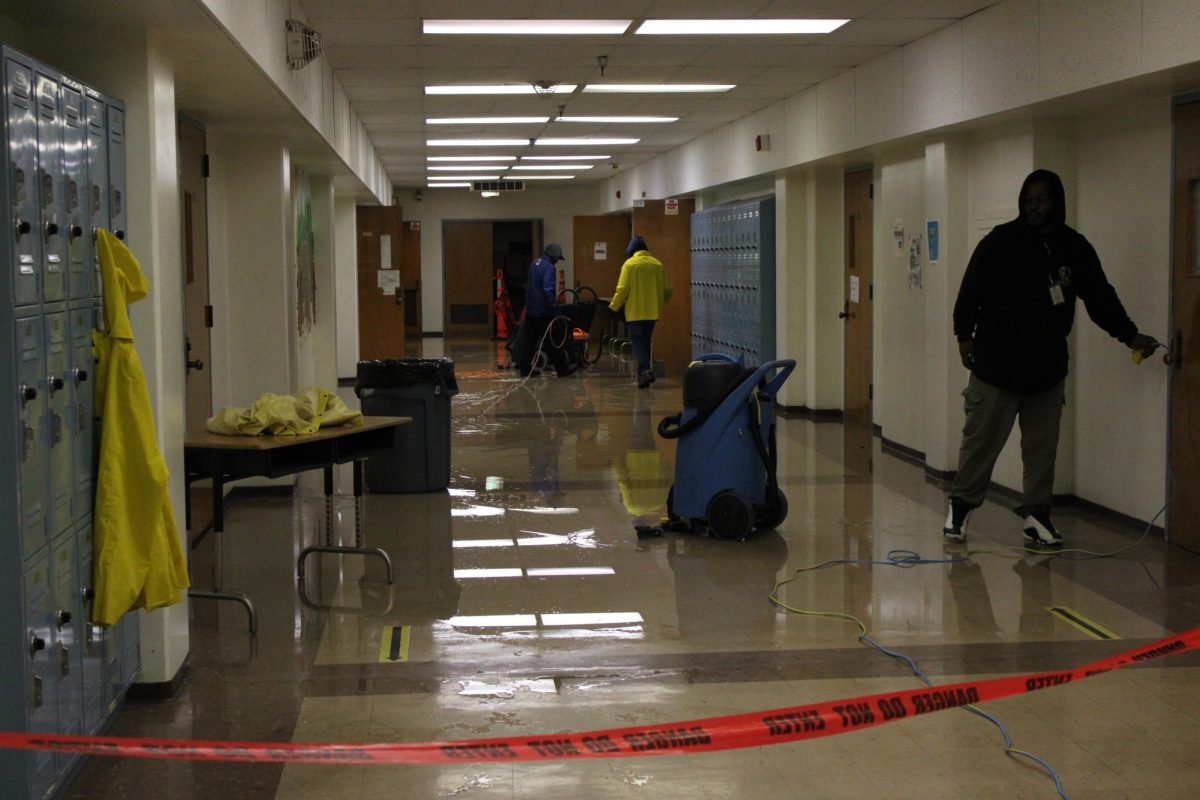This morning, the Los Angeles Unified School District announced that all schools, with the exception of Vinedale College Preparatory Academy and Topanga Elementary Charter, would remain open despite numerous emergency alerts that highly discouraged any travel.

Hamilton students and staff trudged through flooded streets and sidewalks, making their way to campus as the school’s maintenance crew worked hard to assess the damage made from California’s record-breaking heavy rainfalls.
“There’s already operations going on, people came in this morning, checked the whole building and cleared it for use,” said Daniel Luis, one of Hamilton’s campus aides.
The Los Angeles Unified School District’s decision to keep schools open proved difficult as multiple safety hazards arose, both within and outside Hamilton’s school grounds. Flooding in multiple buildings’ lower levels, including Lab and Tech, left several classrooms displaced, causing some students and teachers to continue work in the auditorium and even in the auditorium’s cramped hallway.
Yoga teacher Mr. Westfall was still able to proceed with his planned lesson despite the issues that arose. “We did a boxing lesson in the hallway of the auditorium and it all worked out,” Westfall said optimistically.
However, the floods in the basement of the Lab building were more dangerous than expected.
“All of us teachers down there have surge protectors and other electronics that could energize any kind of flooded water. There could be the possibility of electrocution,” Westfall warned.
The lab building’s basement ceiling tiles, possibly broken off or removed, were captured by students and posted to social media, with captions such as “Shut down the school already.” Several trash cans in the hallway were also seen in these images, presumably placed to catch leaking water.
Entrances to the lab building’s basement have been cordoned off with caution tape for the safety of students and teachers.
On top of class displacement, many other teachers were left to deal with students’ alarming lack of attendance due to weather conditions.
AMPA social studies teacher Mr. Kim explained the difficulty of student absences disrupting teaching plans. “Because so many kids are missing, it’s hard to teach anything, otherwise you have to re-teach it,” Mr. Kim said. “So just make sure to check in with your teachers and see what they’re doing.”
But most Hamilton students had a clear opinion on the matter: they didn’t agree with the district’s choice to keep all but two of the schools open.
11th grade AMPA student, Taryn Grissom, expressed her concern about the ultimate decision. “I feel like the district was very inconsiderate when it came to the choice of putting students and teachers at risk,” she said. “Traveling from far away can be hard and dangerous.”
This was the case for AMPA senior Dylan Lewis, who said the conditions were too severe to commute. “My mom feels uncomfortable with me driving in the rain because it’s dangerous, which is why I stayed home,” Dylan explained.
Those who did drive themselves to school, like Eliya Ben-Ezra, an AMPA senior, faced the hazards that the flooding caused. “When I got to Robertson, the road was really reflective because of the rain. As a result, I didn’t see the giant pothole ahead until the car in front of me had its two back wheels a foot deep in this hole. Luckily, and barely, I swerved past it,” Eliya explained.
For future reference, Mr. Kim advises students to “avoid the right side of the road because that’s where a lot of the water floods since that’s where the drains are. If you’re going to drive, drive on the left lane even if it takes more time, because there’s usually less water.”
Students who overcame the struggles of commuting in harsh conditions were met with more issues at school. The aforementioned closures of damaged areas led to relocation in the auditorium, library, and other vacant classrooms. Outside of the buildings, the pouring rain combined with the strong wind soaked everyone as they tried their best to navigate between classes on time. A common result, as BIT sophomore Melani Penya identified, was the very unpleasant sensation of “wet pants.” The seemingly never-ending problems annoyed and even angered students.
On the contrary, Humanities junior Gabriel Menashe had a more compassionate approach towards the situation, “I am sure that there are many factors and lots of information that goes into the district’s decision that we are unaware of, so I respect their decision.”
Regarding the overall attendance of students, teachers we spoke to reported a decrease in approximately half of their usual classroom size. “I think you could commend the students that came here in spite of those challenges and obstacles that prevented many other students from being able to come,” Mr. Westfall pointed out. “But I also think students can show their grit in a safe way and still want to complete tasks from home.”
However, whether you stay home or go to school in this weather, one thing remains crucial. As Mr. Kim said, “Be safe, you have to stay safe.”
Mark Patricio-Joaquin, Francisco Gregorio, and Imani Horn contributed reporting to this article.
This story was originally published on The Federalist on February 5, 2024.




































